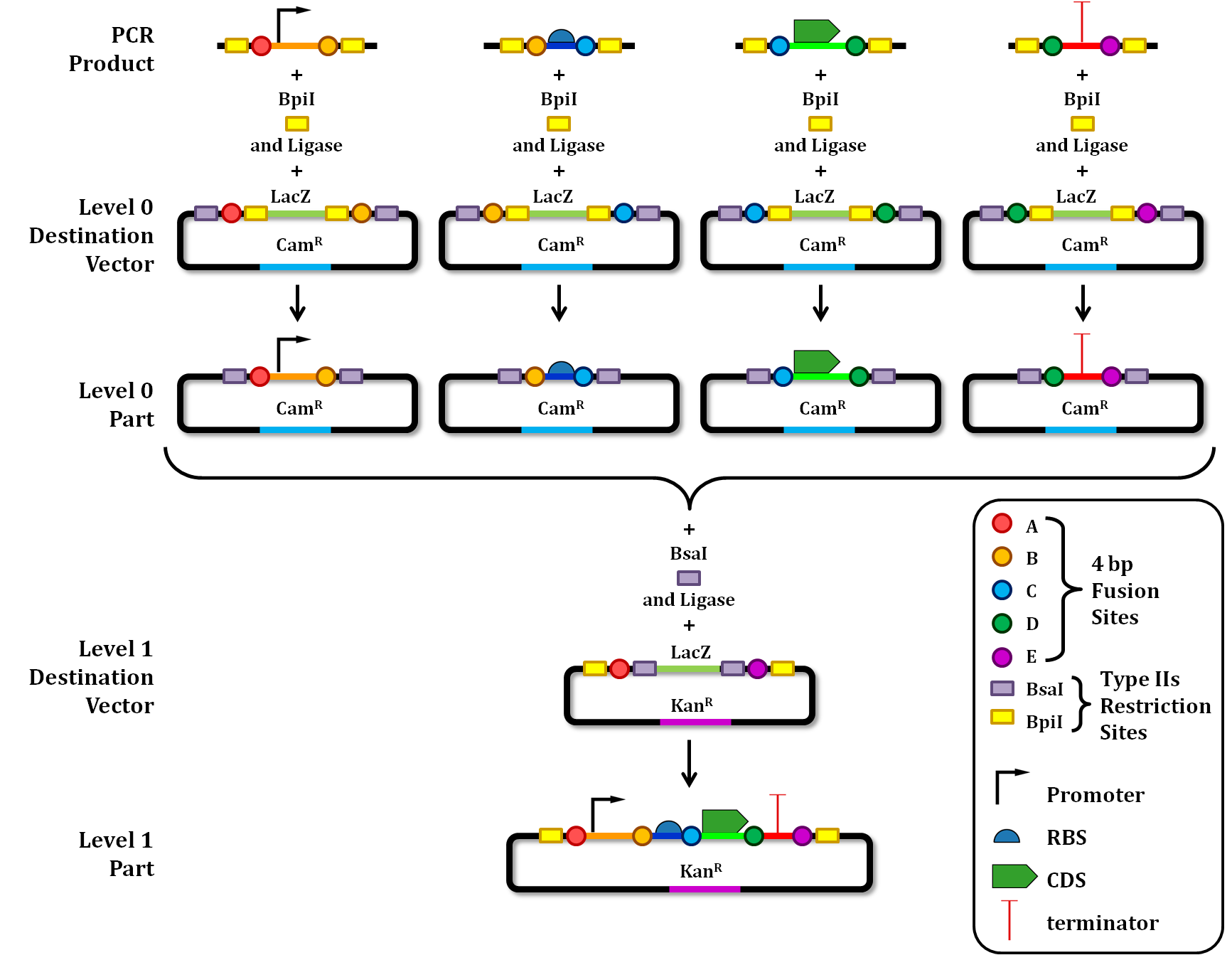Team:BostonU/MoClo2
From 2012.igem.org
| Line 209: | Line 209: | ||
<p dir="ltr">Level 1: Up to six Level 0 parts are ligated together to form Level 1 Modules. In our lab, Level 1 Modules most often result in complete transcriptional units (ex: promoter-RBS-gene-terminator). Level 1 Modules are flanked by BpiI sites and two different 4pb-fusion sites.</p></ul> | <p dir="ltr">Level 1: Up to six Level 0 parts are ligated together to form Level 1 Modules. In our lab, Level 1 Modules most often result in complete transcriptional units (ex: promoter-RBS-gene-terminator). Level 1 Modules are flanked by BpiI sites and two different 4pb-fusion sites.</p></ul> | ||
<br><ul> | <br><ul> | ||
| - | <p><center><img src="https://static.igem.org/mediawiki/2012/ | + | <p><center><img src="https://static.igem.org/mediawiki/2012/9/9b/MoClo00.png" width="750px"></a></p> |
<br> | <br> | ||
<h3><b>Figure 2:</b> Figure legend</h3> | <h3><b>Figure 2:</b> Figure legend</h3> | ||
Revision as of 02:31, 12 September 2012
Modular Cloning

Modular Cloning, or MoClo, is a relatively new assembly method introduced in 2011 by Ernst Weber et al., whereby using Type IIS restriction sites allows the user to ligate up to six DNA parts together in a one-pot reaction. It is a method based on Golden Gate Assembly. Type IIS restriction enzymes cleave outside of their recognition site to one side, thus allowing for removal of those restriction sites when used properly. This helps eliminate excess base pairs, or scars, from forming between DNA Parts. However, in order to ligate together properly, MoClo utilizes a set of 4-bp fusion sites, which remain behind after ligation and thus generate 4-bp scars between DNA parts in the final DNA sequence following ligation of two or more parts.
The MoClo system has three levels of assembly.
Level 0: Basic DNA Parts (ex: promoter, gene, etc.) are PCR amplified and then cloned into MoClo destination vectors to form Level 0 Modules. The DNA parts within these Level 0 Modules are flanked by BsaI sites and two different 4pb-fusion sites.

Figure 1: Generation of Level 0 Modules. The red DNA sequence indicates the BpiI restriction site, the blue DNA sequence indicates the 4-bp fusion sites, and the bracketed names indicate either GFP and LacZ gene sequences. The black arrows over the red DNA sequence indicates the BpiI direction, which impacts how the enzyme will cut the double stranded DNA sequence.
This figure shows how the Type IIS enzyme BpiI is used in MoClo.
Level 1: Up to six Level 0 parts are ligated together to form Level 1 Modules. In our lab, Level 1 Modules most often result in complete transcriptional units (ex: promoter-RBS-gene-terminator). Level 1 Modules are flanked by BpiI sites and two different 4pb-fusion sites.

Figure 2: Figure legend

Figure 3: Figure legend
Level 2: Up to six Level 1 Modules are ligated together to form Level 2 Modules. More complex circuits, such as an inverter or NOR gate, can be built using Level 2 Modules. Like Level 0 Modules, Level 2 Modules are flanked by BsaI sites and two different 4pb-fusion sites.

Figure 4: Figure legend
Wrap up...

 "
"
